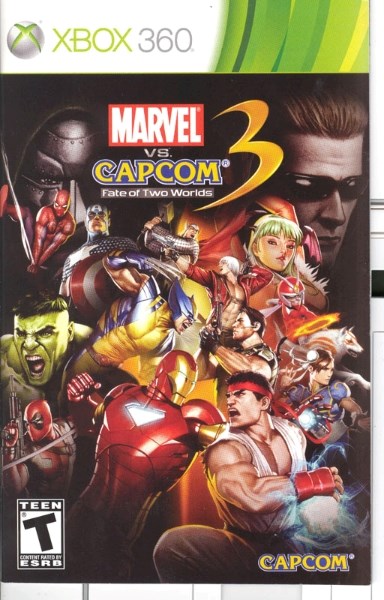Street Fighter’s Ryu rages on a rainy rooftop against the savage storm of Marvel’s Wolverine. A sinuous, spine-shivering gun battle blazes between Deadpool of Marvel and Devil May Cry’s Dante.
The opening scene in Marvel vs. Capcom 3: Fate of Two Worlds is quite simply one of the most exquisite sequences I have ever seen. Some of the best comic book art is rendered into hyper-stylized, ultra-smooth 3D graphics. In fact, I immediately roamed through the menus to play it again, finding it was even better the second time. And through this scene, a common foe — a certain infamous Marvel world-devourer — is revealed and the two sides must unite.
Unfortunately, the opening is misleading and the insinuated premise quickly breaks down. As you work through battles against waves of teams in trios, there are thin plot elements involving defeating Galactus, but ultimately Marvel vs. Capcom is a fighting game without any real ingenuity in its storyline or playing modes. Still, it's fluidly executed, visually impressive and loads of fun.
The graphics have thankfully moved away from the overtly cartoonish look of the previous two games. This third iteration is blessed with a blend of 2D fighting with superbly stylized 3D combos and finishing moves, merging that classic Street Fighter look with a comic-book feel and visually pairing the two franchises beautifully. Slick animations, textures and lighting all flow naturally with incredible backgrounds to enhance and compliment the intensity of the combat. While characters’ skin and facial models are not quite as crisp as they should have been, it's the moves, combos and backgrounds that are at the heart of the game’s pristine presentation.
The only way to tap into the graphics’ full potential is by using the repertoire of moves at your disposal. Thankfully, Marvel vs. Capcom doesn't have the steep learning curve of Street Fighter or Soul Caliber and the basic control combinations are virtually the same for all characters. Controls have been simplified and this adds both unity and fluidity to the combat mechanics.
But there’s more strategy than meets the eye. The buttons have been tweaked since the sequel, switching out the punch-kick setup for a low-medium-high construct. Combined with the added “special” button as well as the stat-boosting X-Factor, fighters have much more strategy at their fingertips. Though not as diverse a move list as diehard fans would expect, attacks are tight, diverse and chain seamlessly together.
This well-balanced control system, combined with the great roster of characters, makes the game easy to pick up, immediately gratifying and more exciting as battles rage on. Its greatest flaw though is the lack of game modes. Already mentioned was a skimpy story, but the absence of tried and true modes like survival and time challenge means the muscle behind the game feels atrophied and creates a dark contrast to the game’s impressive fun-factor. Further, though its distillation to a focus on fighting is at first impressive, the lack of breadth and depth are quickly revealed in its overtly simplistic menu system and limited online features.
On this modern stage, Marvel vs. Capcom holds its own. The graphics are intense and the combat system is rich, fluid and enjoyable. Fans will love spending hours online developing and battling with their favourite trio of characters. But without any true creative spark, such as a compelling story or fresh game modes, Marvel vs. Capcom 3 will quickly fade into the past instead of becoming the quintessential fighting game it could have been.
When he’s not teaching junior high, St. Albert Catholic High alumnus Derek Mitchell spends his free time connected to a video game console.
Marvel vs. Capcom 3: Fate of Two Worlds
Platform: PlayStation 3, Xbox 360
Genre: Fighting
Online: 8-player
Rating: T (Teen)




